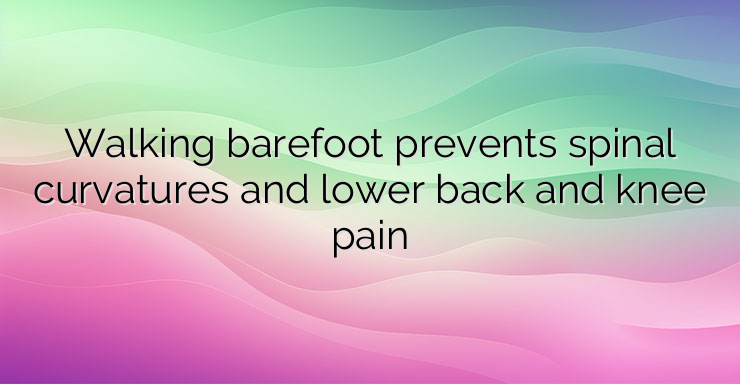While centuries ago wearing shoes was only necessary, today it seems rather strange when we see someone walking barefoot. Often, the materials from which the soles of the shoes are made are synthetic materials, and the shape in most cases does not allow overall comfort for the foot. Shoes are often chosen according to their aesthetic appearance, rather than their main function � to protect and support the feet. Shoes limit the range of motion of the foot muscles, leaving them inactive and insensitive, increasing accessory movements. Uneven soles – high-heeled shoes, platform shoes, and a large number of specialized sports shoes, including running shoes, shift the center of gravity, thus causing a change in gait. Within months to a year, wearing uncomfortable shoes on a daily basis can lead to muscle imbalances, including spinal curvatures. Walking barefoot provides a natural gait, with the weight transferred to the pads of the feet. In this way, the control over the position of the foot is also improved. The function of proprioception is also improved, often improving and reducing pain in the joints of the lower limbs that are not related to organic pathology. In patients with diabetes mellitus and advanced diabetic neuropathy, walking barefoot can create additional problems, as the feet are susceptible to injury, and due to impaired innervation, already formed wounds may not be noticed. Choosing the right shoes is especially important for young children and teenagers. They relate to the growth, stability and strength of the muscles that form the foot. The use of hard soles in young children can interfere with reflex integration, leading to developmental delays and sensory problems. Frequent and prolonged wearing of high heels, especially by young girls, before and around puberty can lead to back pain, slouching, ankle instability and frequent sprains. Weak ankles, low muscle tone, bad posture – the wrong shoe can really hurt. Based on the body’s needs from walking barefoot, more and more effort is being put into developing shoes that allow maximum imitation and approximation of the freedom of the foot. This requires the shoes to have a low sole that is extremely flexible. The so-called minimalist shoes or also known as “barefoot shoes” are one of the options, and they are developed not only for children, but also for adults. However, if it is possible to walk barefoot – it is good to do this on relatively uneven surfaces, so that the proprioceptive sensitivity is additionally trained. Some key characteristics of suitable shoes to wear, especially with already manifested musculoskeletal symptoms, are a low sole height, especially in the heel area. In addition, flexible soles,a large front part for the toes to provide them with enough space and not have to hold the whole foot in a gentle position that stresses other muscle groups. The main meaning of the so-called barefoot shoes is that they protect the feet, but at the same time they in no way limit normal movement or posture. Walking barefoot or with the use of minimalist shoes allows, in addition to enhanced proprioception and corresponding coordination, it is also related to the development of the brain and nervous system in young children. Frequent walking barefoot, even without socks, does not hinder the gait, as is often observed with the use of thick and hard shoes. References: 1. The benefits of walking barefoot; Chiropractors; 2. What Are the Benefits of Barefoot Shoes?, Healthnews.


Leave a Reply